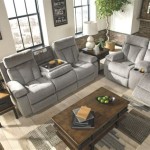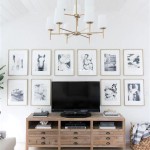String Art Dining Room Decor: Elevating Your Space with Textured Elegance
The dining room serves as a central hub for connection, celebration, and shared meals. Its ambiance significantly impacts the overall dining experience. Designing this space involves carefully selecting elements that reflect personal style and create a welcoming atmosphere. String art offers a unique and compelling avenue for enriching dining room decor. This article will explore the artistic possibilities of string art, providing insights into its application and emphasizing how it can elevate any dining room.
Understanding the Essence of String Art
String art, at its core, involves the manipulation of string, yarn, or thread to create geometric patterns or representational images across a defined surface, typically a wooden board. The process usually begins with a pre-planned design, often involving the precise placement of nails or pegs. These serve as anchor points for the string, which is then wound, wrapped, and stretched between them to form the desired pattern or image. The interplay of lines, angles, and colors creates a striking visual effect, adding texture, depth, and a captivating artistic dimension to the dining room environment. Its versatility allows for a wide array of design possibilities, making it adaptable to diverse aesthetic preferences.
Material Selection and Preparation: Laying the Foundation
The success of a string art project hinges on careful material selection and preparation. The choice of backing board significantly impacts the final aesthetic. Solid wood, such as pine or oak, provides a durable and visually appealing base. Alternatively, painted MDF (Medium-density fiberboard) can offer a smooth surface and a range of color options. The selection should align with the desired style and the overall aesthetic of the dining room. The nails or pegs used should be of appropriate size, with the length determined by the board's thickness and the complexity of the design. String and yarn options are abundant, and include cotton, embroidery floss, metallic threads, or even paracord to achieve various visual effects. The color palette plays a crucial role; the shades selected should complement existing dining room decor, furniture, and color schemes. Before starting, it is essential to prepare the backing surface. This may involve sanding, painting, or staining the board to create a smooth and visually appealing surface, ensuring longevity of the artwork.
Design and Pattern Exploration: Unleashing Creativity
String art's artistic value lies in its design potential. A wealth of patterns and images can be crafted, ranging from geometric shapes to abstract compositions, letters and words, or even representational artworks. Geometry provides a foundation. Simple geometric patterns, such as triangles, squares, and stars, can be created repeatedly to achieve a visually engaging effect. More complex geometric designs can be developed by overlapping these shapes or using curves. The use of stencils or templates can facilitate the transfer of intricate designs onto the backing board, ensuring accuracy and consistency. The choice of pattern should complement the dining room’s style. For minimalist spaces, clean geometric designs often work well. In more traditional settings, consider more elaborate patterns or abstract forms that introduce a sense of visual intrigue. Digital tools are a significant resource; various software applications are available to aid in the visualization and refinement of string art designs.
Color and Texture: Enhancing Visual Impact
The judicious application of color and texture is key to enhancing the visual impact of string art. Color choices can significantly influence the mood and atmosphere of the dining room. Choosing colors that either complement or contrast the existing decor is critical. For instance, a string art piece with a bold pop of color can create a focal point in a dining room with neutral tones. The use of different string textures also adds dimension. Combining smooth cotton yarn with textured wool or metallic threads can create a more tactile and visually dynamic piece. Consider the lighting in the dining room when selecting colors and textures. Natural light will reveal different nuances in color compared to artificial light. The use of multiple colors allows for the creation of gradients, ombre effects, and intricate color schemes to create depth and a captivating visual experience. Experimentation with color combinations is crucial to achieving the desired aesthetic.
Placement and Integration: Considering the Dining Room's Context
The placement of string art within the dining room is as important as the artwork itself. Consider the size and scale of the piece in relation to the surrounding furniture and room dimensions. A small string art piece might be suitable for a gallery wall, while a larger piece can serve as a focal point over a dining table or sideboard. The dining room's layout and existing decor should also guide placement decisions. A string art piece can be incorporated into a gallery wall. This allows for a curated collection of art and adds visual interest to the space. String art can also be used as a standalone statement piece to create a focal point. Consider the sightlines within the dining room. Ensure that the artwork is visible and accessible from various points in the space. The lighting in the dining room also impacts placement. Displaying string art near a window or under focused lighting can accentuate its visual impact.
Maintenance and Care: Preserving Artistic Integrity
Proper maintenance is essential for preserving the integrity and longevity of string art. Dusting the artwork regularly with a soft cloth or a vacuum cleaner with a brush attachment helps prevent the accumulation of dust and debris. Avoid using harsh cleaning agents or excessive moisture, as this can damage the string and the backing board. If the string art is exposed to direct sunlight, consider using UV-protective glass or film to prevent color fading. When moving or handling the artwork, handle it with care to avoid damage. Store string art in a cool, dry place, away from extreme temperatures and humidity. By following these simple care instructions, the string art can retain its beauty and visual appeal for years to come, providing a lasting enhancement to the dining room’s aesthetic.

String Art Rainbow Mandala Wall Home Cafe Decor

String Art The Desert Sun Sacred Geometry Psychedelic Wall
Make Your Own Skull String Art A Beautiful Mess

55 Dining Room Wall Decor Ideas Interiorzine

String Art Sun Home Wall Decor Sacred Geometry For Meditation Norway
:max_bytes(150000):strip_icc()/art4-445991107c1841ccb4f3a266e6793183.jpg?strip=all)
46 Dining Room Wall Art Ideas For Elevated Entertaining


23431 By Uma Blue Canvas Geometric Handmade Circular String Art Shadow Box With Backing 36 X 2 De Cor Furniture
:strip_icc()/sw-394391-c608c8281fd44ce995b8e7cc9285f43e.jpg?strip=all)
10 Creative Ways To Decorate With String Lights All Year Long

Wall Decor Reindeer String Art Tutorial Babies And Biscuitsbabies Biscuits
Related Posts







